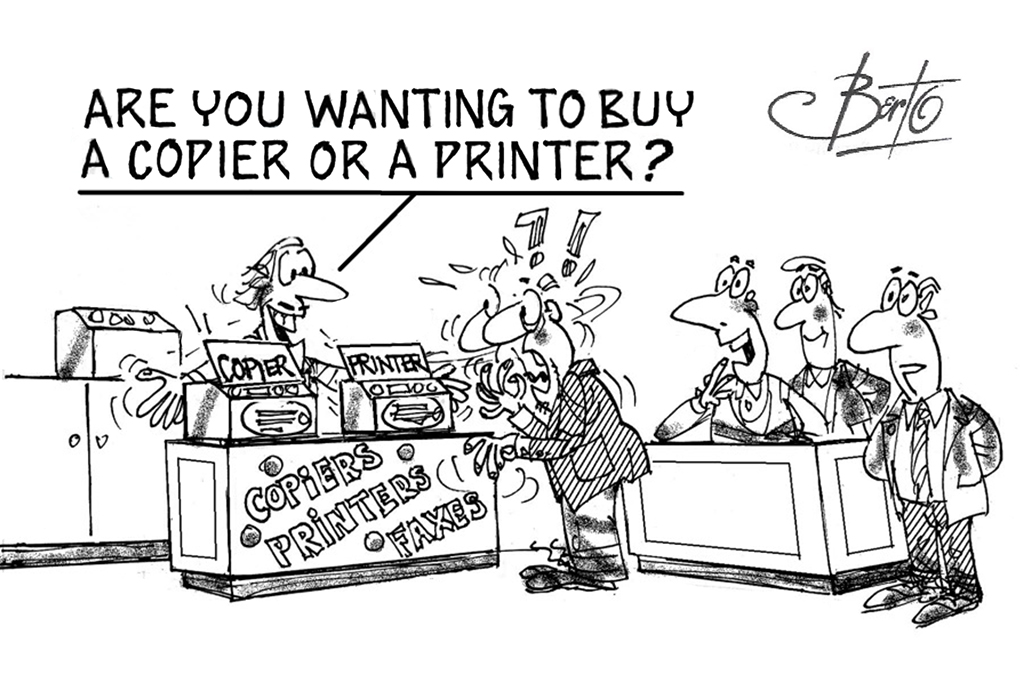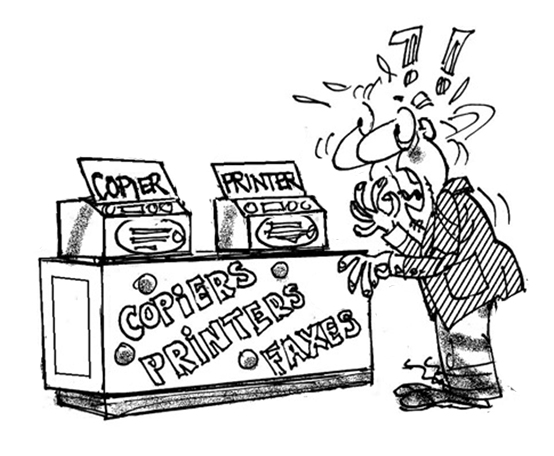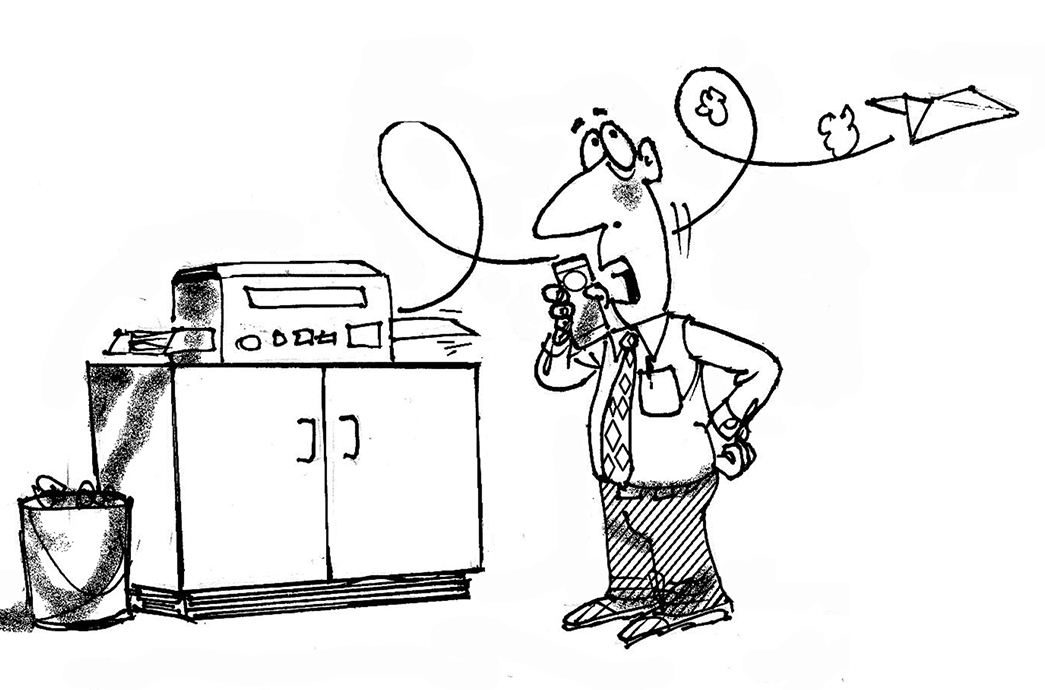Berto Puzzled by the Difference Between Copiers and Printers
Berto Puzzled by the Difference Between Copiers and Printers
While closely related, the copier and office A4 printer industries have traditionally operated in distinct markets.
Copiers, especially those capable of handling A3 paper sizes, have existed in high-volume document-handling environments, such as large offices and print shops, for more than 50 years. These machines are designed for durability and extensive use and often incorporate advanced features like collating, stapling, and duplex printing.
In contrast, the more recent advent of A4 printers has them more commonly found in office settings where the need for large-format printing is minimal. These printers prioritize compactness, ease of use, and affordability, catering to everyday office printing tasks.
Back in November 2017, printer giant HP completed its acquisition of Samsung Electronics in a deal valued at US$1.05 billion as it wanted its A3 technologies. Clearly, it wanted to disrupt the traditional A3 market.
It has been seen as one of the key drivers towards the lines between these industries are increasingly blurring.
Many copiers and printers look quite similar. Berto muses that the time will come when there may be no visible difference between the two:

One significant factor causing change is the declining demand for A3 copying. As digital documentation becomes more prevalent, the necessity for large-format hard copies diminishes.
Copier manufacturers are reconsidering their market strategies and product offerings. Meanwhile, advancements in technology have enabled A4 printers to adopt many features once exclusive to copiers, such as high-speed printing and multifunction capabilities, further narrowing the gap between the two types of devices.
Additionally, the aftermarket industry is playing a pivotal role in this convergence. Aftermarket solutions, including third-party toner and parts, have become viable alternatives to original equipment manufacturer (OEM) products, providing cost-effective options for both copiers and printers.
This affects OEMs’ profitability and pushes them towards innovation and diversification to maintain market share. Companies like Ninestar exemplify this shift. Initially an aftermarket supplier, Ninestar has successfully transitioned into an OEM for printers, illustrating how traditional boundaries within the industry are becoming increasingly fluid.
Economic and operational efficiencies are further driving the potential merger of the copier and office A4 printer industries. Companies can streamline their research and development, production, and distribution processes by consolidating. This unification can lead to the creation of versatile, multifunction devices that meet high-volume and everyday office printing needs, effectively catering to a broader market.
 Cartoon #123: Berto Puzzled by the Difference Between Copiers and Printers
Cartoon #123: Berto Puzzled by the Difference Between Copiers and Printers
Berto’s previous cartoon #122: Greenwashing – Berto urges OEMs to come clean
Who is Berto? And where can you see more of his work? Click here.













Leave a Comment
Want to join the discussion?Feel free to contribute!